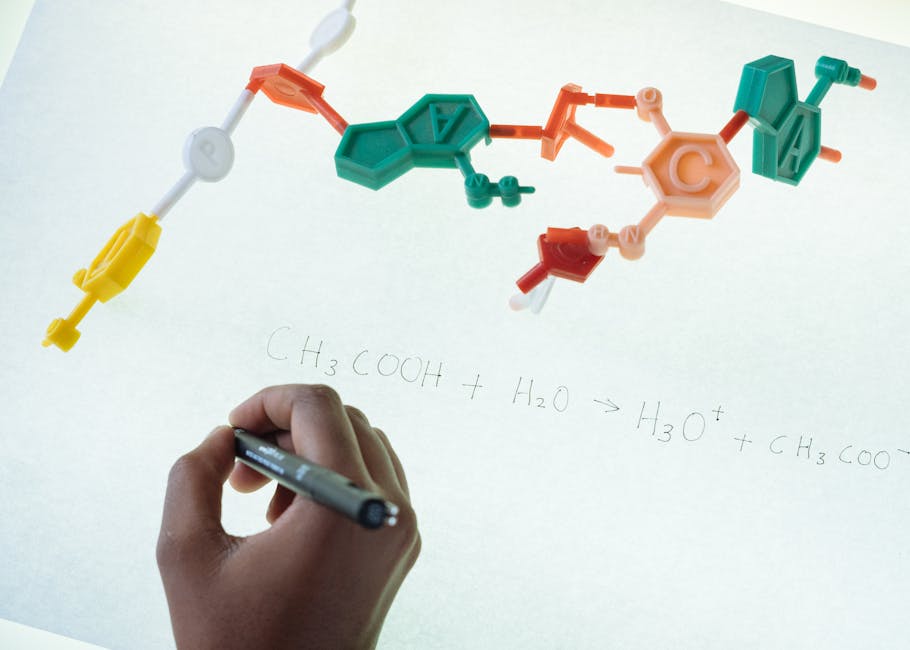MVP Prototype Iteration: Streamlining Test Cycles
You’re ready to revolutionise your testing process.
By streamlining test cycles through MVP prototype iteration, you’ll accelerate product development and achieve faster time-to-market.
Embracing agile methodology and leveraging key metrics for iterative testing, you’ll enhance feedback loops and uncover game-changing insights.
Get ready to optimise your innovation journey with MVP prototype iteration best practises.
Key Takeaways
- Rapid validation of core concepts with minimal resources
- Quick testing, learning, and adaptation
- Gathering valuable feedback early on
- Identifying potential flaws
Importance of MVP Prototype Iteration

You should prioritise MVP prototype iteration because it allows for rapid validation of core concepts with minimal resources. Rapid iteration is crucial in the fast-paced world of innovation, enabling you to quickly test, learn, and adapt.
By continuously improving your MVP prototype through iterative cycles, you can gather valuable feedback early on, identify potential flaws, and refine your product in a cost-effective manner. This approach not only accelerates the development process but also increases the likelihood of creating a successful and market-ready solution.
Innovation thrives on the ability to pivot and evolve, and rapid iteration is the catalyst for such progress. Embracing continuous improvement through MVP prototype iteration fosters a culture of agility and responsiveness within your team. It encourages a mindset of adaptability, where each iteration brings you closer to achieving a product-market fit.
Streamlining Test Cycle Process

Now it’s time to discuss streamlining the test cycle process. In order to achieve iterative optimisation and maximise efficiency, consider the following strategies:
-
Automate Repetitive Tasks: Implement test cycle automation to reduce manual effort and increase the speed of test execution. By automating repetitive tasks such as regression testing, you can free up valuable time for your team to focus on more complex and innovative testing activities.
-
Continuous Feedback Loop: Establish a seamless feedback loop between development and testing teams to enable quick identification and resolution of issues. This iterative process allows for continuous improvement and ensures that any issues are addressed early in the development cycle.
-
Streamlined Communication Channels: Utilise collaborative tools and platforms to streamline communication and feedback sharing amongst team members. Clear and efficient communication channels can significantly reduce the time spent on coordination and decision-making, enabling a more agile and responsive test cycle process.
Key Metrics for Iterative Testing

Let’s talk about the key metrics for iterative testing.
You need to focus on testing efficiency tracking and iterative improvement measurement to ensure the success of your MVP prototype.
Testing Efficiency Tracking
To streamline your test cycles effectively, it’s crucial to track key metrics for iterative testing, ensuring efficiency and progress in your MVP prototype iteration.
By implementing testing automation, you can significantly reduce manual effort and accelerate the testing process.
Performance monitoring tools allow you to identify any bottlenecks or issues in real-time, enabling quick adjustments and improvements.
Additionally, utilising data-driven insights helps in making informed decisions, optimising testing efforts, and ultimately enhancing the overall efficiency of the testing phase.
Embracing these strategies won’t only streamline your current testing processes but also set a solid foundation for future iterations, fostering a culture of continuous improvement and innovation.
Iterative Improvement Measurement
Track key metrics for iterative testing to measure the improvement in your MVP prototype iteration. By focussing on improvement measurement, you can gauge the effectiveness of each iteration and identify areas for enhancement.
Key metrics such as cycle time, defect density, and test coverage can provide valuable insights into the iterative testing efficiency. Evaluating the reduction in cycle time between iterations allows you to assess how quickly new features or changes are being tested and integrated. Similarly, monitoring defect density helps in understanding the quality of the MVP prototype over successive iterations.
Test coverage metrics aid in determining the comprehensiveness of testing, ensuring that all critical aspects are adequately covered. By actively tracking these key metrics, you can drive iterative improvement and optimise the efficiency of your testing processes.
Enhancing Prototype Feedback Loops

Now it’s time to focus on enhancing prototype feedback loops.
You can accelerate prototype iteration by improving user feedback.
This will help streamline the test cycles and make the MVP development process more efficient.
Accelerating Prototype Iteration
You can accelerate prototype iteration by enhancing the feedback loops. To achieve this, consider implementing the following strategies:
- Embrace Agile testing methodologies to quickly gather and incorporate user feedback into the prototype development process.
- Utilise automated testing tools to streamline the identification and resolution of issues, allowing for rapid iteration of the prototype.
- Foster a culture of continuous improvement within your development team, encouraging frequent collaboration and iteration to enhance the prototype at a faster pace.
By enhancing the feedback loops through these strategies, you can significantly accelerate the prototype iteration process, ultimately leading to more efficient and effective product development.
Now, let’s delve into the vital aspect of improving user feedback to further enhance the prototype iteration process.
Improving User Feedback
To enhance prototype feedback loops, focus on gathering actionable insights from real users to drive iterative improvements. User engagement is crucial for obtaining valuable feedback. Encourage users to interact with the prototype actively and express their thoughts and suggestions. Utilise various feedback analysis tools to extract meaningful data from user responses. Look for patterns and recurring comments to identify areas for enhancement.
Additionally, consider implementing user testing sessions to observe how individuals interact with the prototype in real time. This direct observation can provide valuable qualitative feedback. By continuously improving user feedback processes, you can ensure that the prototype evolves in alinement with user needs and preferences. This user-centric approach will ultimately lead to a more refined and effective MVP.
Transitioning into the subsequent section, let’s explore the best practises for MVP prototype iteration.
MVP Prototype Iteration Best Practises

Implementing a well-defined MVP prototype iteration process can significantly enhance your product development efficiency. To ensure that your MVP prototype iteration is efficient and effective, consider the following best practises:
-
Embrace Rapid Iteration: By continuously iterating on your MVP prototype, you can quickly incorporate user feedback and make improvements in a timely manner. This agile approach allows you to adapt to changing requirements and market demands more effectively.
-
Prioritise User Validation: Actively seek and incorporate user validation throughout the iteration process. This ensures that your MVP prototype alines with the needs and preferences of your target audience, increasing the likelihood of market acceptance and success.
-
Maintain Flexibility: Stay open to pivoting and making significant changes based on user feedback. Flexibility in your approach allows you to address pain points and enhance the user experience more effectively.
By following these best practises, you can streamline your MVP prototype iteration process and maximise the impact of user feedback.
This iterative approach sets the stage for the subsequent section about ‘leveraging agile methodology for testing’, enabling you to continuously improve your product development cycle.
Leveraging Agile Methodology for Testing

Embracing agile methodology for testing enhances the efficiency of MVP prototype iteration by allowing for continuous adaptation to user feedback and rapid incorporation of improvements. Agile testing, a key component of iterative development, focuses on flexibility and responsiveness, alining perfectly with the dynamic nature of MVP prototype testing. By leveraging agile methodologies, you can streamline the testing process, ensuring that each iteration contributes significantly to the enhancement of the MVP. The table below provides a comparison of traditional testing methods with agile testing, highlighting the distinct advantages of the latter in the context of MVP prototype iteration.
| Traditional Testing | Agile Testing |
|---|---|
| Sequential process | Iterative process |
| Comprehensive documentation | Emphasis on working software |
| Fixed requirements | Flexible response to change |
Incorporating agile testing practises into your MVP prototype iteration strategy fosters a culture of adaptability and continuous improvement. This approach allows you to swiftly address issues, integrate user feedback, and deliver a high-quality prototype that resonates with your target audience.
Frequently Asked Questions
How Does MVP Prototype Iteration Impact Overall Product Development Timelines?
MVP prototype iteration can significantly impact product development timelines by streamlining test cycles and improving development efficiency. It allows for quick iterations, faster feedback, and the ability to adapt to changes, ultimately accelerating the product development process.
What Are Some Common Challenges in Streamlining the Test Cycle Process and How Can They Be Addressed?
To address challenges in streamlining the test cycle process, focus on improving efficiency. Identifying bottlenecks, automating repetitive tasks, and utilising collaborative tools can streamline the process. Embracing agile methodologies and continuous integration also enhances efficiency.
How Do You Measure the Success of Iterative Testing and What Key Metrics Should Be Used?
To measure the success of iterative testing, you can track key metrics such as user engagement, conversion rates, and customer satisfaction. These performance indicators provide valuable insights into the effectiveness of your testing process.
What Are Some Effective Strategies for Enhancing Prototype Feedback Loops to Gather Valuable Insights?
To enhance prototype feedback loops for valuable insights, consider leveraging agile methodology. Address common challenges to streamline the process, and use effective strategies to gather feedback. This fosters iterative testing success and ensures key metrics are met.
How Can Agile Methodology Be Leveraged Specifically for Testing Within the Context of MVP Prototype Iteration?
You can leverage agile testing to continuously improve MVP prototype iteration. By embracing iterative cycles and collaborative feedback, you can streamline testing processes, identify issues early, and adapt quickly to deliver innovative and high-quality prototypes.
Conclusion
You’ve learnt how to streamline test cycles through MVP prototype iteration. Now, it’s time to put these best practises into action.
Embrace the iterative testing process and keep a close eye on key metrics to drive continuous improvement. By leveraging agile methodology, you can adapt and respond to feedback quickly.
Remember, the key to success lies in the constant refinement of your prototype to deliver a product that exceeds expectations.
Contact us to discuss our services now!
